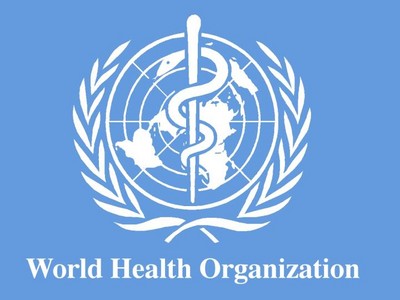 The World Health Organization (WHO) says the economies of low and middle-income countries would lose an estimated $7 trillion to non-communicable diseases (NCDs) over a 14-year period if no serious attempts are made to deal with the problem.
The World Health Organization (WHO) says the economies of low and middle-income countries would lose an estimated $7 trillion to non-communicable diseases (NCDs) over a 14-year period if no serious attempts are made to deal with the problem.
“From 2011-2025, cumulative economic losses due to NCDs under a “business as usual” scenario in low- and middle-income countries is estimated at $7 trillion,” it said.
According to the WHO urgent government action is needed to meet global targets to reduce the burden of non- communicable diseases (NCDs), and prevent the annual toll of 16 million people dying prematurely.
These victims of non-communicable diseases die before the age of 70, from heart and lung diseases, stroke, cancer and diabetes, the WHO said in a new report.
“The global community has the chance to change the course of the NCD epidemic,” said WHO Director-General Dr Margaret Chan, who on Monday launched the ‘Global status report on non-communicable diseases 2014’.
“By investing just $ 1-3 dollars per person per year, countries can dramatically reduce illness and death from NCDs. In 2015, every country needs to set national targets and implement cost-effective actions. If they do not, millions of lives will continue to be lost too soon.”
The report which was made available to the Ghana News Agency states that most premature NCD deaths were preventable; of the 38 million lives lost to NCDs in 2012, 16 million or 42 per cent were premature and avoidable – up from 14.6 million in 2000.
Nearly five years into the global effort to reduce premature deaths from NCDs by 25 per cent by 2025, the report provides a fresh perspective on key lessons learned.
According to the report premature NCD deaths could be significantly reduced through government policies reducing tobacco use, harmful use of alcohol, unhealthy diets and physical inactivity, and delivering universal health care.
It said in Brazil for example, the NCD mortality rate was dropping 1.8 per cent annually due in part to the expansion of primary health care.
But the report calls for more action to be taken to curb the epidemic, particularly in low- and middle-income countries, where deaths due to NCDs were overtaking those from infectious diseases.
It said almost three quarters of all NCD deaths, and 82 per cent of the 16 million premature deaths, occur in low- and middle-income countries.
The WHO report provides the baseline for monitoring implementation of the Global action plan for NCDs 2013–2020, aimed at reducing the number of premature deaths from NCDs by 25 per cent by 2025.
Outlined in the action plan were nine voluntary global targets that address key NCD risk factors including tobacco use, salt intake, physical inactivity, high blood pressure and harmful use of alcohol.
“Our world possesses the knowledge and resources to achieve the nine global NCD targets by 2025,” said Dr Oleg Chestnov, WHO’s Assistant Director-General for Non-communicable Diseases and Mental Health.
“Falling short of the targets would be unacceptable. If we miss this opportunity to set national targets in 2015 and work towards attaining our promises in 2025, we will have failed to address one of the major challenges for development in the 21st century.
The report provides “best buy” or cost-effective, high-impact interventions recommended by WHO, including banning all forms of tobacco advertising, replacing trans fats with polyunsaturated fats, restricting or banning alcohol advertising, preventing heart attacks and strokes, promoting breastfeeding, implementing public awareness programmes on diet and physical activity, and preventing cervical cancer through screening.
It said many countries had already had success in implementing these interventions to meet global targets.
Working on the ground in more than 150 countries, WHO is helping develop and share “best buy” solutions so that they can be implemented more widely.
WHO is also helping countries understand the dimensions that influence NCDs outside the health sector, including public policies in agriculture, education, food production, trade, taxation and urban development.
The report said though some countries were making progress towards the global NCD targets, the majority were off course to meet the 2025 targets.
It said while 167 countries have operational NCD units in the ministry of health, progress on other indicators has been slow, especially in low- and middle-income countries.
NCDs impede efforts to alleviate poverty and threaten the achievement of international development goals.
It noted that when people fall sick and die in the prime of their lives, productivity suffers. And the cost of treating diseases can be devastating – both to the individual and to the country’s health system.
From 2011-2025, cumulative economic losses due to NCDs under a “business as usual” scenario in low- and middle-income countries is estimated at $7 trillion.
WHO estimates the cost of reducing the global NCD burden is $ 11.2 billion a year: an annual investment of $ 1-3 per capita.
It said high rates of death and disease, particularly in low- and middle-income countries, were a reflection of inadequate investment in cost-effective NCD interventions.
WHO recommends all countries move from commitment to action, by setting national targets and implementing the “best buy” interventions starting in 2015.
The report provides the most current estimates on NCD mortality (2012) and risk factors in 194 countries.
Source: GNA























